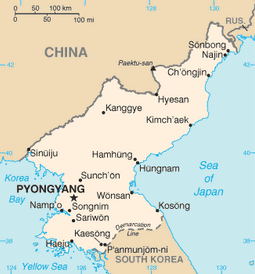 (Source: Daily NK)
(Source: Daily NK)
The North Korean authorities are in the process of replacing their existing shortwave radio transmitters, Daily NK has learned. The measure appears designed to both allow better broadcasts targeting South Korea and stop outside shortwave broadcasts entering.
According to the Northeast Asian Broadcasting Institute (NABI), the authorities made their first move in March this year, replacing the shortwave transmission equipment at Kanggye Transmission Station in Jagang Province with modern equipment made by Beijing BBEF Electronics Group Co. Kanggye Transmission Station is one of three high output shortwave transmission facilities in North Korea, with the other two being at Pyongyang and in Gujang County, North Pyongan Province. […]
North Korea has two shortwave broadcasters; Chosun Central 1st Broadcast and Pyongyang Broadcast. The first is for the domestic and international audience while the latter serves the international audience only, leading to the assumption that North Korea is replacing its existing transmitters in order to improve its broadcasts targeting South Korea. With the sort of modern equipment arriving from BBEF, North Korean broadcasts will be receivable anywhere in South Korea, no matter where in the North they are broadcast from.
According to NABI, North Korea’s shortwave broadcasting capacity was previously very weak due to worn out and broken equipment. Signal strength was particularly weak, meaning that listeners tended to receive a different channel even when tuned directly to the intended broadcast frequency. According to one defector from Pyongyang who arrived in South Korea in June 2011, the signal strength of Chosun Central 1st Broadcast was so weak at times that it was even unlistenable in most regions of North Korea.
However, the quality has recently improved dramatically, as Park Sung Moon of NABI explained to Daily NK, saying, “Recent analysis of North Korea’s shortwave Chosun Central 1st Broadcast and Pyongyang Broadcast reveal that they are being broadcast clearly and consistently, without interference or signal shifting.”[…]
The other side of the coin is that improved shortwave transmission strength stops incoming signals from reaching listeners.
According to one defector who used to be a part of the Party Propaganda and Agitation Department, “They know that when the Chosun Central 1st Broadcast signal strength is weak, it regularly arrives with outside broadcasts mixed in. I think they want to stop this happening.”
